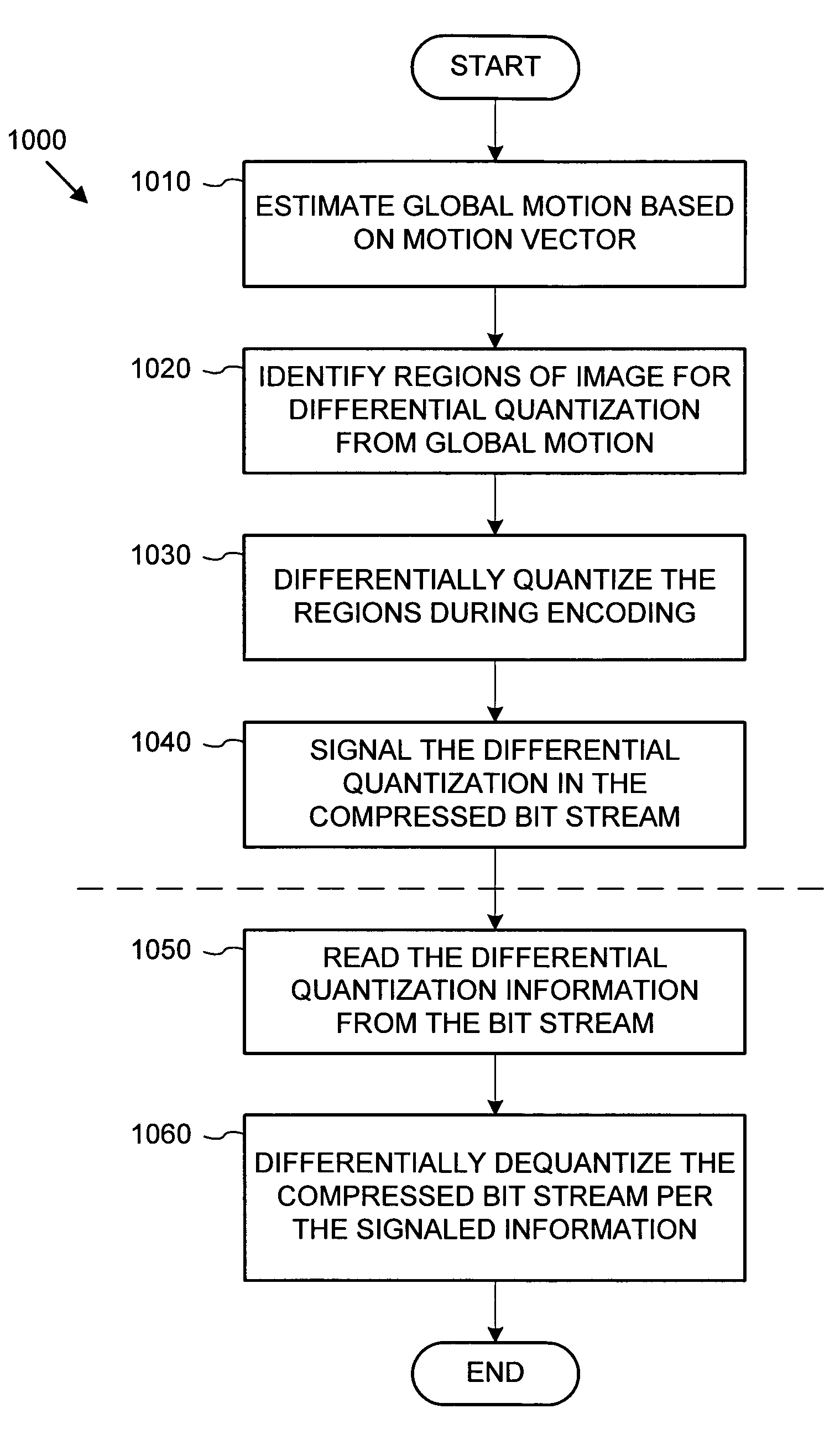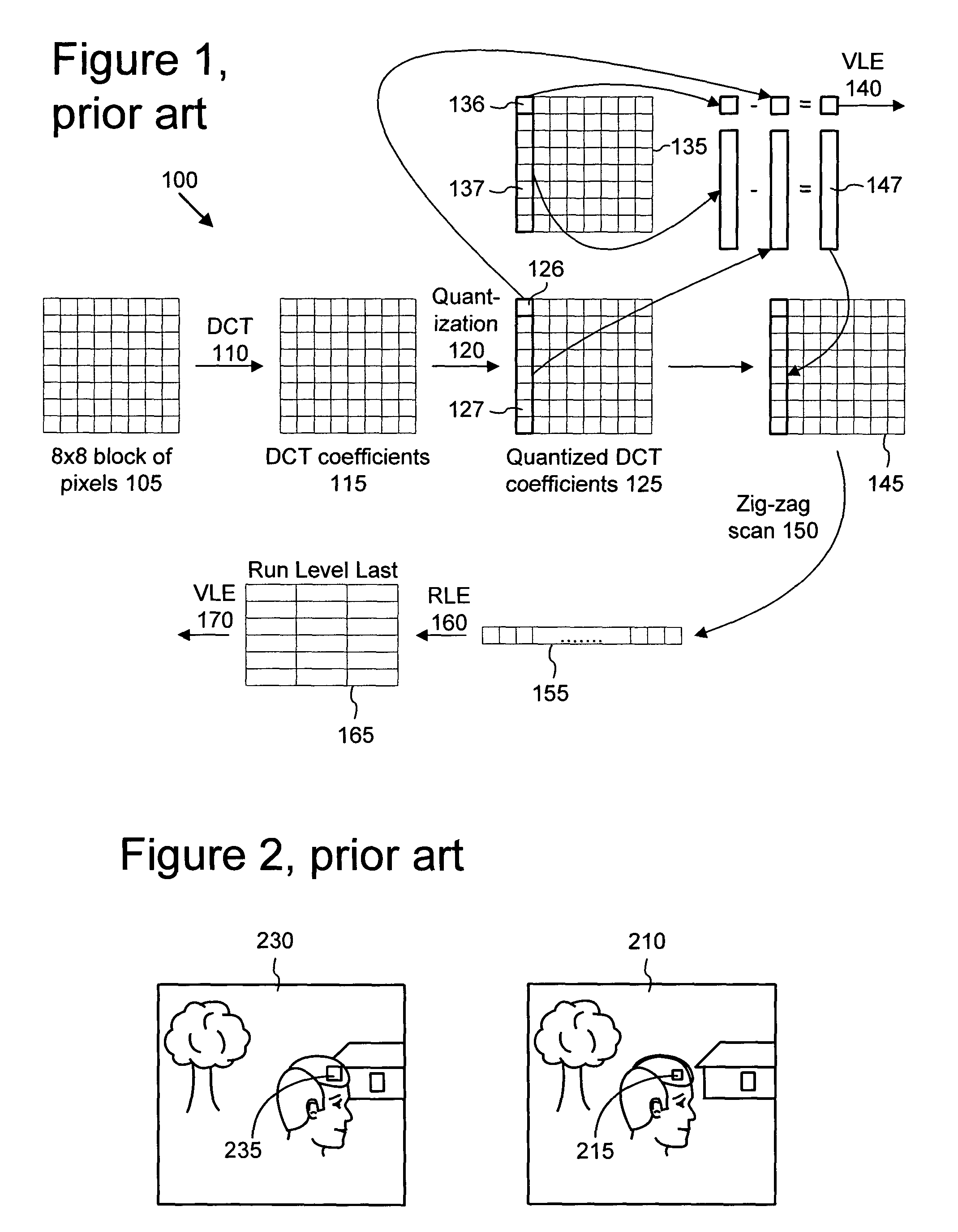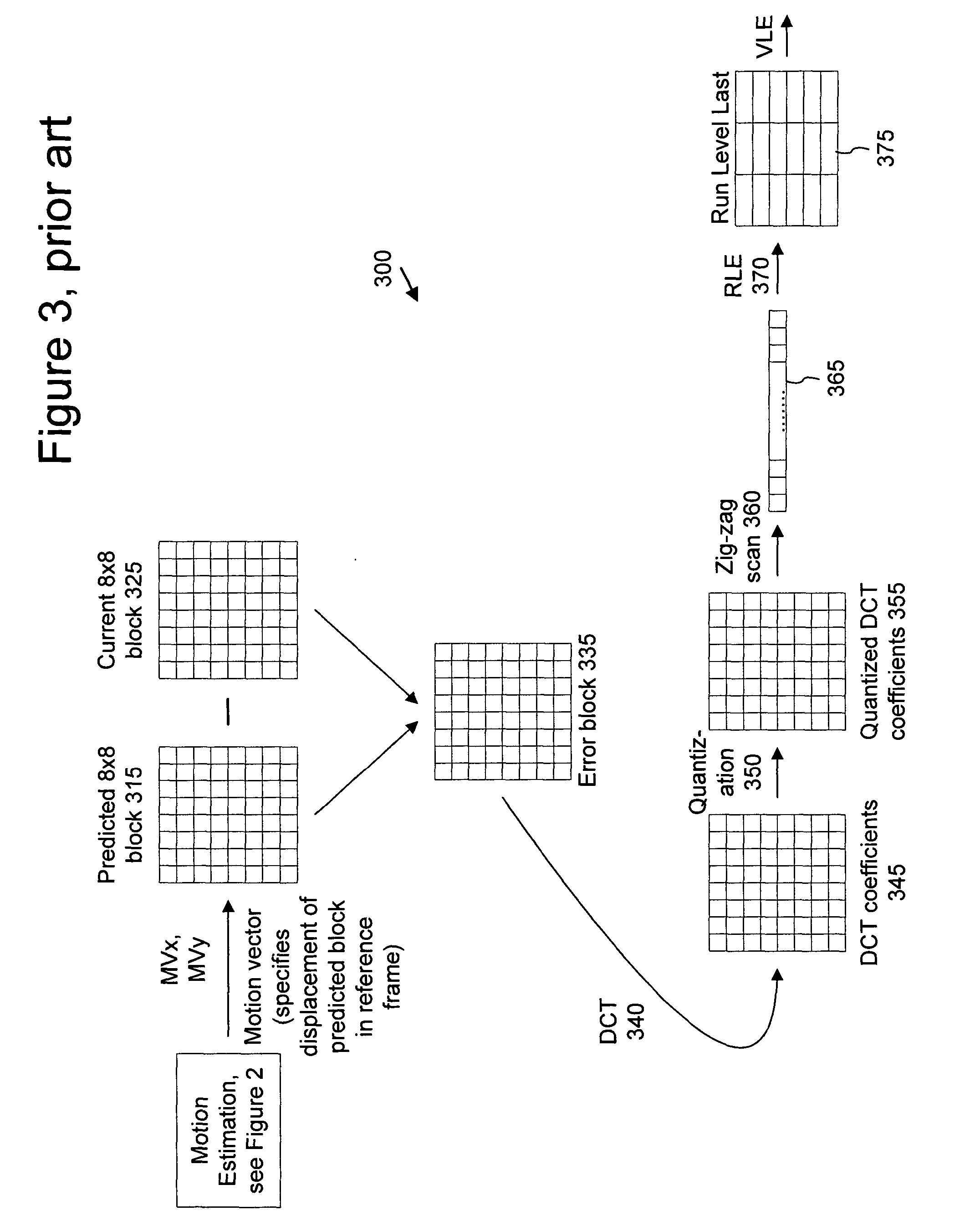Intelligent differential quantization of video coding
a technology of differential quantization and video coding, applied in the field of differential quantization of digital video coding or compression, can solve the problems of large storage and transmission capacity of digital video, lossless compression, and most computers and computer networks lack the resources to process raw digital video, so as to improve the perceptual quality of video and the effect of preparing to handle compressed bitstream
- Summary
- Abstract
- Description
- Claims
- Application Information
AI Technical Summary
Benefits of technology
Problems solved by technology
Method used
Image
Examples
case 1
=1.
In this case, the syntax provides four possibilities: 1. The macroblocks located on the boundary are quantized with a second quantization step size (ALTPQUANT) while the rest of the macroblocks are quantized with the frame quantization step size (PQUANT). 2. The encoder signals two adjacent edges (per Table 1 below) and those macroblocks located on the two edges are quantized with ALTPQUANT while the rest of the macroblocks are quantized with PQUANT. 3. The encoder signals one edge and those macroblock located on the edge are quantized with ALTPQUANT while the rest of the macroblocks are quantized with PQUANT. 4. Every single macroblock can be quantized differently. In this case, we will indicate whether each macroblock can select from two quantization steps (PQUANT or ALTPQUANT) or each macroblock can be arbitrarily quantized using any step size.
case 2
=2.
The macroblocks located on the boundary are quantized with ALTPQUANT while the rest of the macroblocks are quantized with PQUANT.
The bitstream syntax for case 1 includes the following fields:
DQUANTFRM (1 bit)
The DQUANTFRM field 1131 is a 1 bit value that is present only when DQUANT=1. If DQUANT=0 then the current picture is only quantized with PQUANT.
DQPROFILE (2 bits)
The DQPROFILE field 1132 is a 2 bits value that is present only when DQUANT=1 and DQUANTRFM=1. It indicates where we are allowed to change quantization step sizes within the current picture. This field is coded to represent the location of the differentially quantized region as shown in the code Table 1 below.
TABLE 1Macroblock Quantization Profile (DQPROFILE) Code TableFLCLocation00All four Edges01Double Edges10Single Edges11All Macroblocks
DQSBEDGE (2 bits)
The DQSBEDGE field 1133 is a 2 bits value that is present when DQPROFILE=Single Edge. It indicates which edge will be quantized with ALTQUANT, as ...
PUM
 Login to View More
Login to View More Abstract
Description
Claims
Application Information
 Login to View More
Login to View More - R&D
- Intellectual Property
- Life Sciences
- Materials
- Tech Scout
- Unparalleled Data Quality
- Higher Quality Content
- 60% Fewer Hallucinations
Browse by: Latest US Patents, China's latest patents, Technical Efficacy Thesaurus, Application Domain, Technology Topic, Popular Technical Reports.
© 2025 PatSnap. All rights reserved.Legal|Privacy policy|Modern Slavery Act Transparency Statement|Sitemap|About US| Contact US: help@patsnap.com



